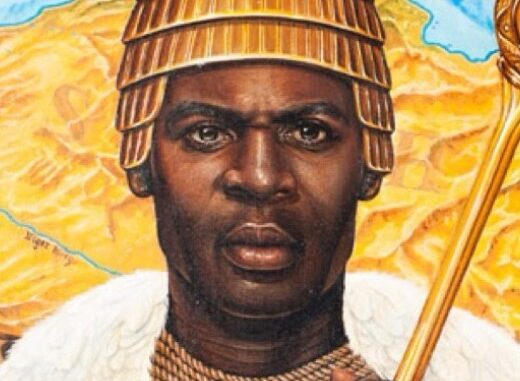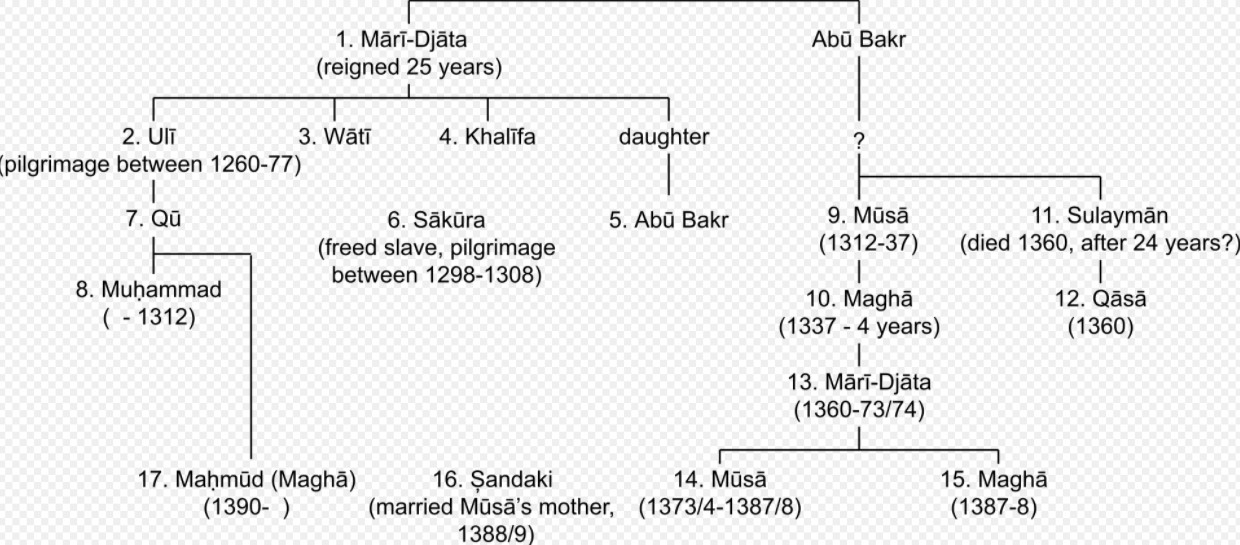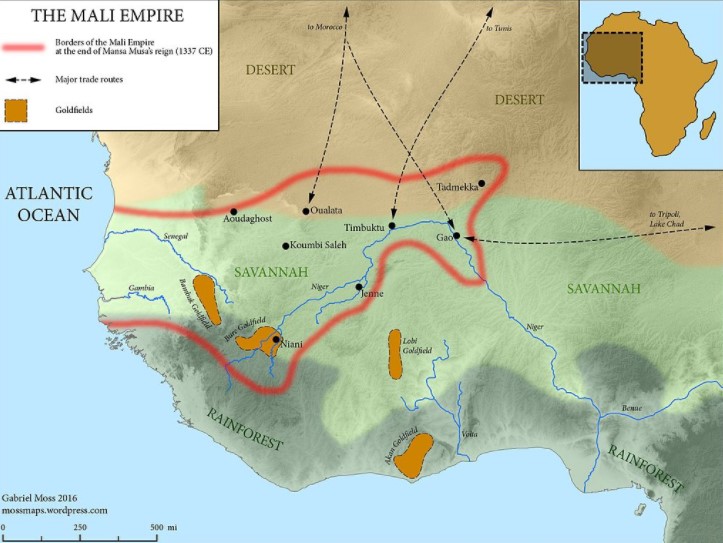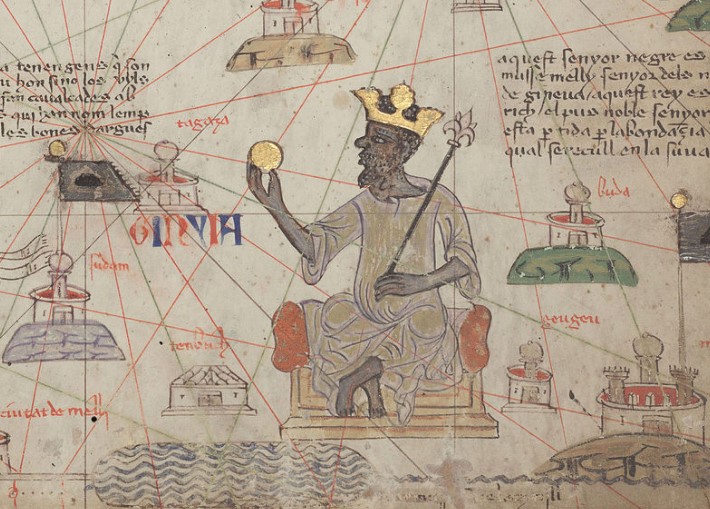
Musa I or Mansa Musa was the tenth Mansa of the Mali Empire. He has been described as the wealthiest individual of the Middle Ages. He ruled Mali from 1312 to 1337. He held many titles such as “Emir of Melle”, “Lord of the Mines of Wangara”, “Conqueror of Ghanata” during his reign. He conquered 24 cities, along with their surrounding districts. At the time of Musa’s ascension to the throne, Mali in large part consisted of the territory of the former Ghana Empire, which Mali had conquered. Mali was the largest producer of gold in the world during his reign. And he has been considered one of the wealthiest historical figures. His other names are “Kankou Musa”, “Kankan Musa”, “Kanku Musa”, “Mali-Koy Kankan Musa”, “Gonga Musa” and “the Lion of Mali”. He also helped his empire reach tremendous growth by encouraging the arts, literature, and architecture.
Though he was considered the wealthiest individual of the Middle Ages, there is no accurate way to quantify his wealth.
What is Mansa Musa Famous For?
- Considered the wealthiest historical figures in the Middle Ages.

Source: @wikipedia
Where was Mansa Musa Born?
Mansa Musa was born in 1280. He was born in the Mali Empire. He was born to father, Faga Laye. Information about his mother is not available. According to Ibn-Khaldun’s comprehensive history of the Malian kings, Musa’s grandfather was Abu-Bakr Keita. His religion was Islam. His pilgrimage to Mecca made him well known across northern Africa and the Middle East.
Mansa Musa Lifestory
- Musa’s grandfather Abu-Bakr did not ascend the throne and his father Faga has no significance in the History of Mali.
- Musa came to the throne through a practice of appointing a deputy when a king goes on his pilgrimage to Mecca or some other endeavor, and later naming the deputy as heir.

Source: @wikipedia
- He was appointed deputy of Abubakari Keita II. The king before him embarked on an expedition to explore the limits of the Atlantic Ocean and never returned.
- Musa became Mansa in 1312.
- The Mali Empire consisted of land that is now part of Mauritania and the modern state of Mali.
- He made his pilgrimage between 1324 and 1325. His procession included 60,000 men, all wearing brocade and Persian silk, including 12,000 slaves. Each of the slaves carried 1.8 kg of gold bars and heralds. His procession also included 80 camels which each carried 23-136 kg of gold dust.
- Musa would give the gold to the poor he met along his route to Mecca. He also traded gold for souvenirs. He built a mosque every Friday.
- He controlled the price of gold in the Mediterranean.
- He returned from Mecca in 1325. He brought back many Arabian scholars and architects.
- He built several mosques and madrasas in Timbuktu and Gao, most notable, Sankore Madrasah. He also built the Hall of Audience.
- He built his grand palace in Timbuktu, which later became a center of trade and culture.
- The University of Sankore in Timbuktu was restaffed under Musa’s reign with jurists, astronomers, and mathematicians. It was capable of housing 25,000 students and had one of the largest libraries in the world with roughly 1,000,000 manuscripts.

Source: @wikipedia
Mansa Musa Wife
Mansa Musa was married to Inari Kuante. His son and successor, Mansa Magha Keita was appointed deputy during his pilgrimage. Musa’s son Maghan ruled Mali from 1337 to 1341. Not much description of his personal life is available.
Mansa Musa Death
Mansa Musa died in c. 1337 aged 56 or 57. However, his death date is debated among modern historians. Comparing the reign of his successors, his death is calculated in 1337. Some records declare Musa’s death soon after returned from Mecca.
Leave a Reply